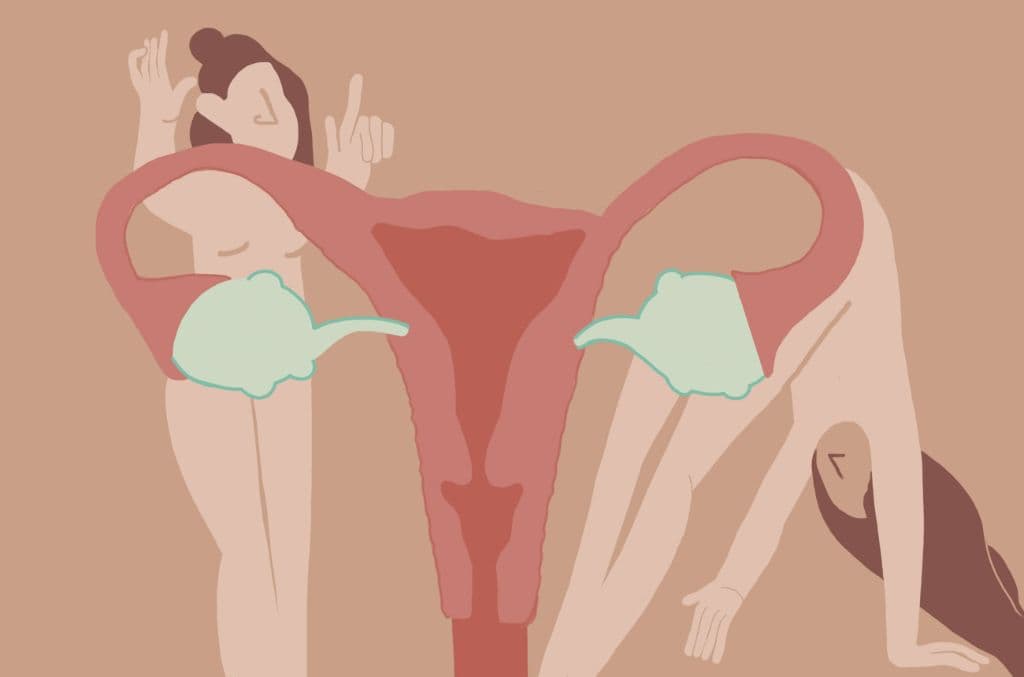If you are born with this extra set of organs for reproduction, you’ll know they also demand extra attention and care. Before we get into the maintenance of these organs, it is important to acquaint ourselves with them first.
A woman’s reproductive system comprises the ovaries, fallopian tubes (both of which you have one on each side), the uterus, and the vagina.
Ovaries: The first important function of the ovaries is to house the eggs, also known as oocytes. Interestingly, the number of eggs that will be available lifelong can be determined within a few hours of birth. Once this window closes, your body does not generate new eggs ever. These eggs are stored in the ovaries and are simply sitting there until you hit puberty. Once you attain puberty and your menses start, the development of these eggs is also restarted. Under the influence of special hormones (known as gonadotropins- big word!), the ovarian cycle is activated. Once activated, your ovaries select 100-1000 eggs each month, and in a game of survival of the fittest, only one egg makes the cut and continues to grow, while the others perish away. Around mid-cycle, this egg matures and is signaled to be released. This is known as ovulation, the second important function of ovaries. After ovulation, the remaining shell of the egg in the ovaries becomes corpus luteum, and its function is to produce enough progesterone, in case there is a pregnancy. This is the third important function of the ovaries. If no pregnancy, by day 21-22 of your menses, the corpus luteum perishes and you get your periods. The ovarian cycle repeats itself.
These tightly controlled ovaries are very sensitive to the slightest hormonal imbalance in your body, to stress, heavy exercise, anorexia, binge eating, processed foods, mental health problems, various medicines, various naturally occurring food items, and also artificial as well as natural preservatives. In case of disturbance, irregular periods and irregular bleeding problems set in.
Uterus: The uterus is a muscular bag, whose main and only function is to give a warm, growing, and secure home to the baby and provide it with good nutrition. The uterus is divided into the body, where the baby attaches and grows, and the cervix, which works like a stop valve until the baby is ready to come into this world.
Inside the uterus, a spongy cushion that is rich in blood supply grows every month, which is known as the endometrium. This endometrium grows in close relation to your ovarian cycle. As the ovaries get ready to release an egg, your uterus readies its home in anticipation of the coming guest – a baby! In the absence of a pregnancy, once the corpus luteum perishes, there is a lack of hormonal support for the endometrium to grow. And so it breaks down at the end of the month, marking that time of the month. The uterine muscle starts to contract to push this old useless endometrium out, resulting in cramps during periods. Once the period ends and the ovarian cycle resumes, the uterus again starts afresh and starts building this endometrium again, restarting the uterine cycle.
The second part of the uterus is the cervix, which connects the uterine cavity to the vaginal cavity. The cervix has multiple functions. It helps in draining menstrual blood into the vaginal cavity and out of the body. It helps to keep pregnancy safely inside the womb until it is ready, and also produces cervical mucus which helps in getting pregnant (fertile cervical mucus). Additionally, it protects the uterine cavity from infections. The cervix is different from the uterus as it has no muscular component. It is a very dynamic part that constantly changes in different phases of your life. It is also the second most common site of cancer in women, which is a conversation for another time.
The ovarian and uterine cycles work in very close association. Any disturbance in the ovarian cycle will also disturb the uterine cycle, which can lead to too little bleeding, too much bleeding, bleeding for fewer days, bleeding for too many days, or cause the development of fibroids and multiple other problems.

Fallopian tubes: The fallopian tubes originate inside the uterus, travel sideways and end just above the ovaries. The end inside the uterus is circular (known as ostia) while the ovarian end has finger-like projections called fimbriae, which pick up the egg once it is released. The fallopian tubes are hollow structures. On the inside lumen, they are covered with small bristle-like structures known as cilia, which are responsible for the transport of things inside the tube. Fun fact: depending on which day of your menstrual cycle you are on, the hormones decide if things will move towards the uterus (first half of the cycle) or away from the uterus (second half of your cycle). These fallopian tubes are extremely important, as the fertilization (union) of eggs and sperms, development of the baby (embryo), and nourishing it till it is ready to enter the uterine cavity and latch on the endometrium (cushion) happens within these tubes. The first 5-6 critical days of development of pregnancy occurs in these tubes.
These tubes are easily infected by diseases such as tuberculosis, STI’s such as chlamydia, gonorrhoea, syphilis, pelvic infectious diseases, abdominal surgeries such as appendicitis, surgery on the ovary (for ovarian cyst), etc. If the tube gets blocked at the uterine end or at the ovarian end, it loses its functional capacity and can lead to problems in getting pregnant. Infected blocked tubes can also get filled with water or pus and be a cause of pelvic infection or the formation of tubo-ovarian mass causing further problems. Damage to the tubes can cause the developing embryo to get trapped in the tubes (known as ectopic pregnancy), which is a medical emergency if not dealt with at the earliest.
Vagina: The vagina is a hollow, round, muscular wall meant for copulation (penetrative sex) between partners. The functions of the vaginal cavity are to drain menstrual fluid, allow penetration during intercourse, deposit seminal ejaculate, and nurture and nourish the sperms for a few days. The vagina has a separate set of glands that function to maintain vaginal health. The secretions from these glands are the first line of defense against vaginal infections. Too frequent use of intimate hygiene products can disrupt this balance and make infections more frequent. Normally, vaginal fluid is acidic in pH and it helps stop the growth of many bad bacteria and fungi. The vaginal cavity also has good bacteria and fungi which also protects from infection.
STI’s, vaginal fungal infections, bacterial vaginosis, etc. are all vaginal infections that can occur if proper hygiene is not maintained by both partners. Maintaining vaginal health is easy: habits such as washing regularly with plain water, washing and wiping from the front (backward only after passing urine), wearing loose clothing during hot days, proper use of menstrual hygiene products and regularly changing them, using barrier contraceptives (condoms), etc. can ensure a healthy, happy vagina that is free from infection!
So there you have it! We’ve briefly explored various reproductive organs in this article, and potential problems that may arise from each of them. Do you feel like you know your body a little better? It’s a pretty cool system that just works quietly in the background, isn’t it?
Disclaimer: This information is educational and should not be construed as medical advice. Please consult your doctor before making any dietary changes or adding supplements.
Proactive For Her is a digital clinic for women, offering accessible, personalised, and confidential healthcare solutions. We offer out-patient care, diagnostic services and programs for various health concerns of Indian women, across their lifetime - from puberty to pregnancy to menopause.

